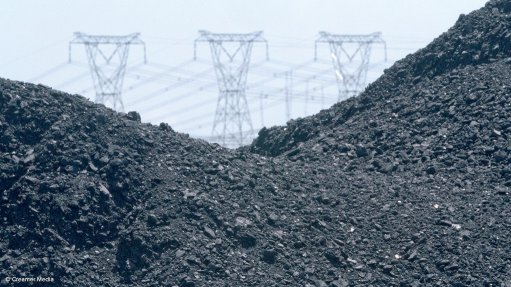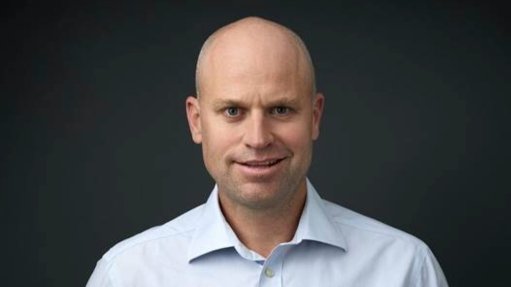The sublime to the ridiculous
Ah, let’s have a few tricky questions: (Q) What is the difference between a Cape Town MyCiti bus and a fire on Guy Fawkes Day? (A) The Guy Fawkes fire only gets burnt to ashes once a year. (Q) When will Cape Town trains be able to provide transport to all Capetonians? (A) When people stop burning the rail carriages and stop stealing the overhead power supply catenary. (Q) What causes six Eskom 600 MW steam turbines to trip all at the same time? (A) Coal truck transport operators colluding to sabotage the system.
Now, read all this again? Does any of it sound reasonable? It shouldn’t. But it’s all true. The fact of the matter is that, in the case of Cape Town, when alternative transport to a minibus taxi exists and can be more comfortable or cheaper, or both, the reaction of the taxi operators is to render inoperable the alternatives. In a similar way, although they will not say it, Eskom is fighting, as we speak, a war against the coal truck drivers who are busy sabotaging the power generation system in retaliation.
The problem is that coal theft is big business. About 16 months ago, Eskom nearly ran out of coal. This was because the coal supply system was corrupt from the coal mine to senior authorities at power stations. Coal trucks avoided weighbridges and collected coal from mines, ostensibly for a power station but which was sold off privately or just arrived at power stations with a cargo of soil, which was signed off as ‘coal received’. When some power stations found that they had actually no stockpiles of coal left, they gave out that they had ‘wet coal’ that could not be burned. A childlike story, if ever there was one (when I previously referred to this in an article, I got an email from a man who said it was all true – the wet coal jammed the hoppers. Which, one presumes, is something the hopper designers had not foreseen . . . “golly!” they must have thought, “who would think of that?”). Since Eskom is trying to push coal delivery by conveyer belt and rail, this is hurting the whole coal theft business. The reaction of this group is to set conveyor belts alight and sabotage coal hoppers. Further action of a more direct nature is to cause turbines to trip, preferably a few at the same time.
The biggest challenge that Eskom has is to get the genies back into the bottles. If corruption exists at any level in Eskom, it is very hard to prove and very hard to eliminate. In any organisation, one has to rely on the moral rectitude of the staff – to believe that they do not wish to steal or cheat. This moral stand is often helped to a degree by the belief that if you are caught, you will get a criminal record and be jailed. But here things fall apart. In a country where trains and buses are burned to force the public not to use them or to force authorities from not operating them, then the simple matter of crippling Eskom’s good intentions by sabotage and theft becomes very difficult to eliminate. Our country suffers.
There’s really only one way forward. Eskom must plan, within the next 20 years, to eliminate the bulk of coal power generation. There is no chance that renewable energy can fill the gap – whatever anybody thinks, there are just too many windless nights. The only way is nuclear power. Let’s get together some off-the-shelf nuclear solutions and get on with it. People oppose nuclear power, but this is not rational. In France, within ten years, 22 out of the existing 58 reactors will have been operating for over 40 years. They are safe. They work. And the fuel can’t be stolen. Sabotage is near impossible. It is really time to move on, if we want electricity in our future.
Article Enquiry
Email Article
Save Article
Feedback
To advertise email advertising@creamermedia.co.za or click here
Comments
Press Office
Announcements
What's On
Subscribe to improve your user experience...
Option 1 (equivalent of R125 a month):
Receive a weekly copy of Creamer Media's Engineering News & Mining Weekly magazine
(print copy for those in South Africa and e-magazine for those outside of South Africa)
Receive daily email newsletters
Access to full search results
Access archive of magazine back copies
Access to Projects in Progress
Access to ONE Research Report of your choice in PDF format
Option 2 (equivalent of R375 a month):
All benefits from Option 1
PLUS
Access to Creamer Media's Research Channel Africa for ALL Research Reports, in PDF format, on various industrial and mining sectors
including Electricity; Water; Energy Transition; Hydrogen; Roads, Rail and Ports; Coal; Gold; Platinum; Battery Metals; etc.
Already a subscriber?
Forgotten your password?
Receive weekly copy of Creamer Media's Engineering News & Mining Weekly magazine (print copy for those in South Africa and e-magazine for those outside of South Africa)
➕
Recieve daily email newsletters
➕
Access to full search results
➕
Access archive of magazine back copies
➕
Access to Projects in Progress
➕
Access to ONE Research Report of your choice in PDF format
RESEARCH CHANNEL AFRICA
R4500 (equivalent of R375 a month)
SUBSCRIBEAll benefits from Option 1
➕
Access to Creamer Media's Research Channel Africa for ALL Research Reports on various industrial and mining sectors, in PDF format, including on:
Electricity
➕
Water
➕
Energy Transition
➕
Hydrogen
➕
Roads, Rail and Ports
➕
Coal
➕
Gold
➕
Platinum
➕
Battery Metals
➕
etc.
Receive all benefits from Option 1 or Option 2 delivered to numerous people at your company
➕
Multiple User names and Passwords for simultaneous log-ins
➕
Intranet integration access to all in your organisation


















